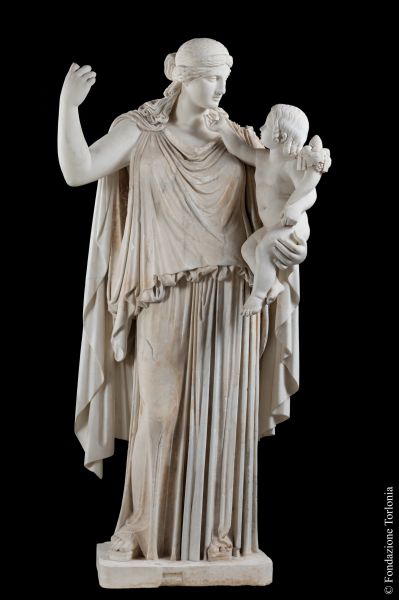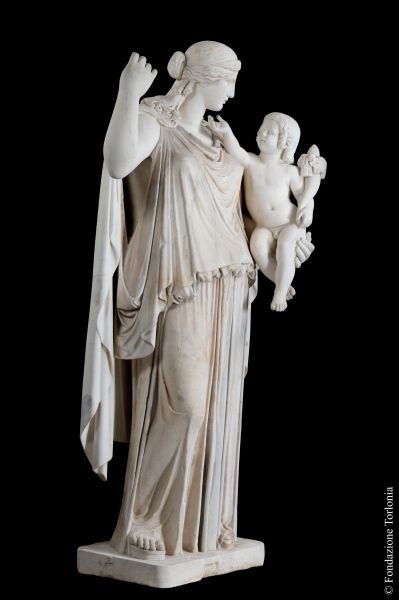

Eirene and Ploutos Group, Replica of the group of Eirene and Ploutos of Cephisodotus
The Greek writer Pausanias, in his long narrative Description of Greece, tells of a famous bronze statue made by the Greek sculptor Cephisodotus the Elder (father of Praxiteles) for the Agora of Athens – the centre of city life. The work portrayed Eirene and Ploutos together, Peace and Wealth. The Torlonia group skilfully replicates the original Greek model described by Pausanias, flanking Eirene, a mule-like figure cloaked in a large peplum, and Ploutos, a small boy.
The theme of peace had great success and particular development in the political debates of Athens in the fourth century BC, to the point that the Athenians instituted its cult following the victory over the Spartan fleet at Alytia (375 BC) and exalted its link with prosperity through this statuary group, destined to great fame in the ancient world.
Inventory: MT 290
Material: White marble
Technique: Work sculpted through the use of: chisels (also square-tipped and toothed) rasps
Dating: Imperial era
Origin: Villa dei Quintili (Visconti)
The Greek writer Pausanias, in his long narrative Description of Greece, tells of a famous bronze statue made by the Greek sculptor Cephisodotus the Elder (father of Praxiteles) for the Agora of Athens – the centre of city life. The work portrayed Eirene and Ploutos together, Peace and Wealth. The Torlonia group skilfully replicates the original Greek model described by Pausanias, flanking Eirene, a mule-like figure cloaked in a large peplum, and Ploutos, a small boy.
The theme of peace had great success and particular development in the political debates of Athens in the fourth century BC, to the point that the Athenians instituted its cult following the victory over the Spartan fleet at Alytia (375 BC) and exalted its link with prosperity through this statuary group, destined to great fame in the ancient world.
Inventory: MT 290
Material: White marble
Technique: Work sculpted through the use of: chisels (also square-tipped and toothed) rasps
Dating: Imperial era
Origin: Villa dei Quintili (Visconti)

